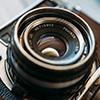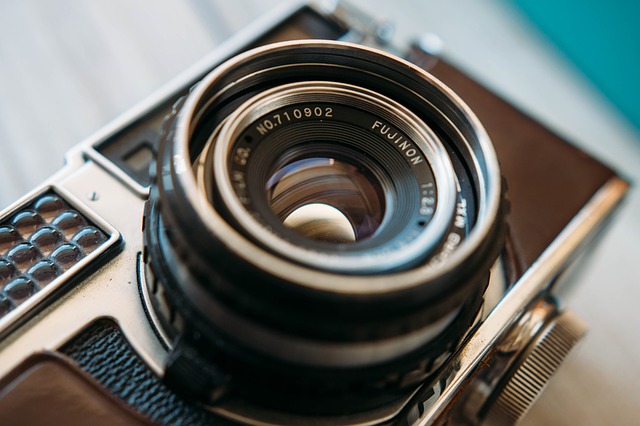
Camera and Photography Tips and Terminology


Whether you are a beginner who has just purchased your first camera or a seasoned professional looking to refresh your knowledge, the Internet offers a wealth of information to help you better understand how to use a camera to capture the best possible images. Photography can serve a range of purposes, from recording memories to creating works of art, and with a digital camera in hand and a few helpful pointers, anyone can be well on their way to achieving the results they desire.
- Camera: A tool used to record or capture images
- Burst Mode: A setting allowing the rapid capturing of images for as long as the shutter button is pressed. This is also known as continuous frame capture.
- Tripod: A three-legged support that holds a camera steady with zero movement
- Flash: An artificial light used to illuminate a scene or subject, typically used in dark settings
- Calibration: The act of adjusting the color of one device relative to another or adjusting the color of one device to an established standard
- Viewfinder: A preview window used for framing and focusing
- Intervalometer: A device that attaches to a camera and automatically captures an image or series of images at programmed intervals. These are frequently used in security camera systems.
- Focus: The position at which rays of light in the lens converge, creating a sharp image
- Color Balance: How accurate the proportions of colors in an image are compared to the original scene
- Foreground: Part of the frame nearest to the camera
- PPI: Pixels per inch, a measurement that describes the resolution of a printed image. The higher the number, the more detailed a print will be.
- Background: An area located behind the subject of the photograph, farthest away from the camera
- RGB: Red, green, and blue, the three primary colors of light
- Panorama: A photograph with a wide frame of view
- Continuous Autofocus: When engaged, this system works all the time, even before the shutter button is pressed.
- Macro Photography: Extreme close-up photography of a subject. In DSLR photography, the term refers a photograph with a 1:1 or higher magnification.
- Contrast: The measured change in brightness between the darkest and lightest tones in an image
- Pixels: The smallest pieces of information that make up a digital picture
- Compression: The act of minimizing the size of a graphics file in bytes
- Lens: The part of the camera that light travels through to record or store an image. A lens may be attached permanently or may be interchangeable.
- Backlit: A technique that lights the subject from behind
- Aperture: A unit of measurement defining the size of the opening in a lens, which can be manipulated to control the amount of light passing through the lens. The size of the aperture is measured in F-stops.
- Digital Zoom: Digital magnification of an image. This tool is crucial when using security camera systems for surveillance.
- Depth of Field: The measurement of the distance between the closest and farthest-away objects that are in focus in a photo or image
- DSLR: Digital single-lens reflex, a type of camera with interchangeable lenses
- Shutter: A device allowing light to pass through it for a specific amount of time, exposing film or an electronic sensor to light to capture an image
- Dynamic Range: The range of tones of an image in color or grayscale. The higher the dynamic range is, the more gradations are preserved in a photograph.
- Exposure: The amount of light reaching the film or the image sensor. Exposure is based on the aperture, shutter speed, and brightness of the particular setting or scene.
- Fixed Aperture: The aperture value remains constant regardless of focal length.
- Noise: A term that describes visual distortion in a photograph. It can look like film grain but may also show up as a blotch of discoloration. Noise can ruin a photograph and gets worse when shooting in low light.
- Focus Lock: The act of pre-focusing the camera at a certain distance, then moving to compose the image in frame before taking the photo. This is accomplished by half-pressing the shutter button, then composing the photo, and then pressing it in all the way.
- Focal Length: The distance, measured in millimeters, between the lens and the image sensor
- Gamma: The amount of contrast found in an image
- ISO: The ISO control changes how sensitive the light sensor is when taking a photo. In bright lighting, a low sensitivity is used, and in dark lighting, a higher sensitivity is required.
- Gradation: A smooth transition between black and white, from one color to another, or from color to no color
- Disposable Camera: Also known as a single-use camera, a disposable camera is a point-and-shoot camera meant to be disposed of once the film has been used. It uses 35 mm film and commonly has a fixed-focus lens and a built-in flash. Waterproof versions can be used for underwater photography.
- Hot Shoe: A connector found on the top of the camera allowing for the attachment of a flash unit
- Filters: These accessories are used to change the light entering the camera is some way. The filter is a glass or plastic disk placed in a metal or plastic ring attached to the camera's lens. Filters can be used to keep out ultraviolet light coming from the sun, reduce light, or change the color balance.
- Image Resolution: The density of pixels in an image
Camera and Photography Tutorials
- Time-Lapse Photography Tutorial
- Tips to Improve Your Night Photography
- How to Take Great Pictures
- Simple Tricks to Improve Your Photos
- Product Photography Tips for Anyone
- Finding Backlight Naturally While Outdoors
- How to Create Professional-Looking Portraits
- The Importance of Light
- How to Create Action Sequences
- Tips for Garden Photographers
